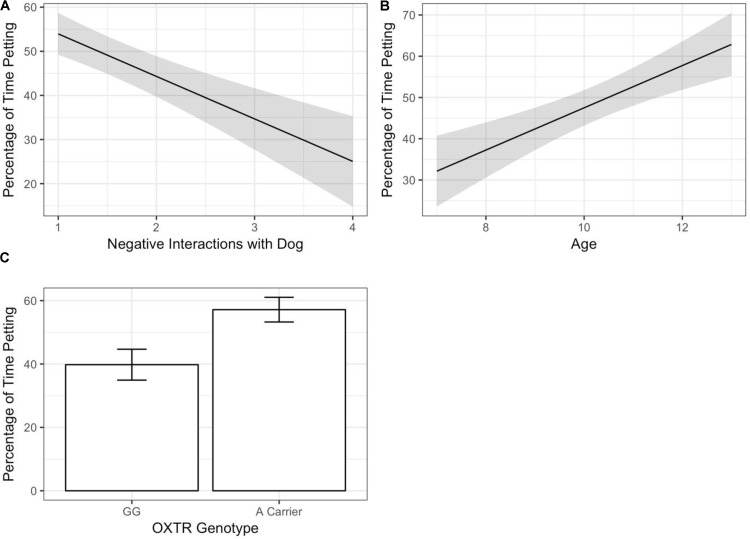FIGURE 1.
The proportion of time spent petting during a child–dog interaction task was independently predicted by child age, child genotype, and children’s self-reported relationship with the pet dog. (A) Higher levels of child-reported negative relationships with the pet dog was associated with less petting. The relationship effect is shown averaged across child genotype and illustrates the overall main effect for the child–pet relationship. The regression line shows the final model prediction with the shaded area indicated standard error of the mean. (B) Older child age is associated with more time spent petting. Lines shows reduced model prediction for each genotype and shading indicates standard error of the mean. (C) Children who are A-carriers at the OXTR rs53576 genetic polymorphism, compared to GG homozygotes, engaged in more petting during the child–pet interaction.

